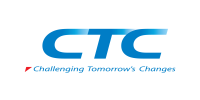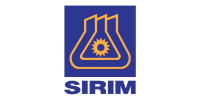
|
Getting your Trinity Audio player ready...
|
City University of Hong Kong (CityUHK) has announced a significant breakthrough in antenna technology that could transform wireless communications, particularly in preparation for sixth-generation (6G) networks.
The research, conducted by a team led by Professor Chan Chi-hou, Chair Professor of the Department of Electrical Engineering, introduces a revolutionary metasurface antenna capable of generating and controlling multiple frequency components simultaneously through software. The study was recently published in Nature Communications and represents a major advancement in antenna design and communication systems.
The new metasurface antenna stands apart from conventional antennas, which are typically fixed in functionality and limited in frequency control. Traditional antennas require hardware changes to adapt to varying demands, which restricts their flexibility.
Addressing this challenge, the research team developed a concept known as the “synthetic moving envelope,” which enables antennas to generate and manipulate arbitrary harmonic frequencies. This enhanced control, achieved through software coding, significantly improves the antenna’s versatility and performance in complex wireless systems.
The metasurface antenna’s unique capability to manage multiple harmonic frequencies concurrently allows it to transmit signals to multiple users in different directions. This feature can substantially increase the channel capacity of wireless communication systems, an essential requirement for the high-speed and large-capacity demands expected in future networks.
Furthermore, the technology supports the integration of sensing and communication functions, a crucial step for the development of advanced 6G networks, where real-time sensing and ultra-fast data transmission are foundational elements.
The research demonstrates how the metasurface antenna overcomes the constraints of traditional designs by providing unparalleled spectral control. Through a streamlined coding strategy, the antenna simplifies frequency management, offering enhanced performance with reduced complexity. Its highly efficient “1-bit” coding strategy enables control of wave properties through software, eliminating the need for intricate hardware modifications. This innovation not only makes antenna systems more flexible but also expands their potential for on-chip integration, paving the way for compact, scalable, and high-performance solutions in wireless communication.
Beyond traditional communication systems, the metasurface antenna has broader applications across several advanced fields. The ability to generate and control multiple frequencies makes it suitable for large-capacity information systems, real-time imaging, and wireless power transfer. These capabilities are critical for emerging technologies that require high efficiency, reliability, and security. The integration of sensing capabilities further strengthens the antenna’s potential use in cognitive radar, integrated photonics, and quantum science, highlighting its versatility across different technological domains.
The technology also addresses challenges related to spectral efficiency and interference, which are critical for maintaining secure and reliable communication channels. Its “sideband-proof” design reduces unwanted frequency interference, improving signal clarity and reliability. This feature is particularly valuable for applications in high-security communication systems, where interference mitigation and signal accuracy are essential.
The research is a result of collaboration between CityUHK and Southeast University, Nanjing, China, involving contributions from multiple researchers. The development of this antenna technology was made possible through support from the Hong Kong Research Grants Council and the Shenzhen Natural Science Foundation Program, which provided funding for the study. Researchers leveraged their combined expertise in terahertz and millimetre waves, metasurfaces, and advanced communication systems to achieve this technological milestone.
The metasurface antenna’s potential to enhance wireless communications and increase channel capacity makes it a promising solution for the development of 6G networks. Future wireless systems will require advanced technologies capable of integrating communication, sensing, and imaging functions into a single platform. The innovation demonstrated by the CityUHK research team moves antenna design closer to meeting these demands, offering solutions that are not only efficient but also adaptable to evolving technological requirements.
















